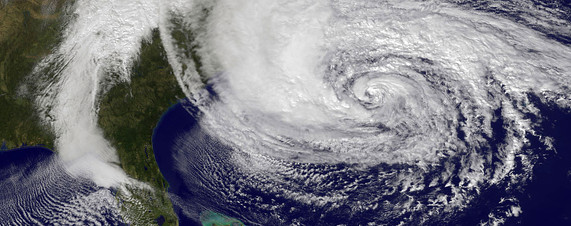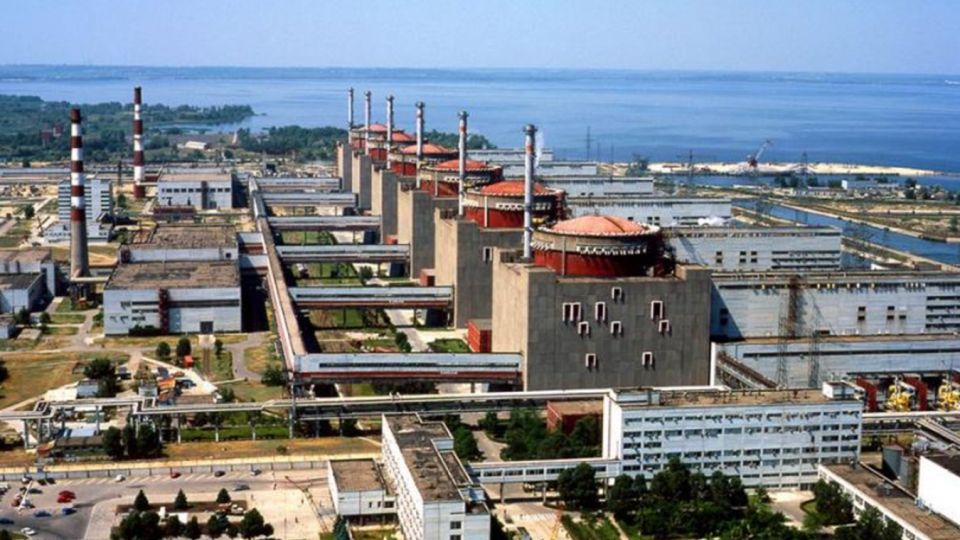Hurricane Sandy links: updates and information (Updated 10-31, 12:00 pm ET)
Scroll down to hurricane graphic for resources and links.
Update 10/31 12:00 pm ET
Alert ends at Oyster Creek nuclear plant in NJ
Updated 10/30 5:00 pm ET
The US Nuclear Regulatory Commission has issued a news release (excerpts below; emphasis added):
NRC STARTING TO RETURN TO NORMAL INSPECTION COVERAGE FOLLOWING SANDY; ALERT REMAINS IN EFFECT AT OYSTER CREEK NUCLEAR POWER PLANT
The U.S. Nuclear Regulatory Commission is beginning to return to normal inspection coverage for nuclear power plants in the Northeastern United States in the path of Hurricane Sandy. Heightened coverage will continue at Oyster Creek, a plant in Lacey Township, N.J., still in an "Alert" due to high water levels in its water intake structure.
In addition to the event at Oyster Creek, three reactors experienced trips, or shutdowns, during the storm. They were Indian Point 3, in Buchanan, N.Y.; Salem Unit 1, in Hancocks Bridge, N.J.; and Nine Mile Point 1, in Scriba, N.Y. All safety systems responded as designed.
At Oyster Creek, the Alert - the second lowest of four levels of emergency classification used by the NRC - remains in effect as plant operators wait for the water intake levels to drop to pre-designated thresholds. The water level rose due to a combination of a rising tide, wind direction and storm surge. Oyster Creek was shut down for a refueling and maintenance outage prior to the storm and the reactor remains out of service. Water levels are beginning to subside to more normal levels, but the plant remains in an Alert status until there is enough confidence levels will remain at more normal levels. Offsite power at the plant is in the process of being restored.
Meanwhile, three plants-Millstone 3, in Connecticut, Vermont Yankee, in Vermont, and Limerick, in Pennsylvania-reduced power in advance of or in response to the storm. Millstone 3's power was reduced to about 70 percent in advance of the storm to minimize potential impacts on its circulating water system due to the storm. Vermont Yankee reduced power to 89 percent in response to a request from the grid operator due to the loss of a transmission line in New Hampshire. Limerick Unit 1's power was reduced to about 50 percent and Limerick Unit 2's to about 25 percent in response to low electrical demands on the grid because of storm-related power outages.
Besides potentially affected nuclear power plants, the NRC also monitored any possible impacts on nuclear materials sites it oversees but did not identify any concerns.
NRC inspectors were onsite at all of the nuclear power plants expected to experience the greatest effects of the storm. Those inspectors were tasked with independently verifying that operators were following relevant procedures to ensure plant safety before, during and after the storm.
The NRC will continue to coordinate with other federal and state agencies prior to the restart of the affected plants.
###
Updated 10/30 no time stamp
The Nuclear Energy Institute issued the following news release: Nuclear Energy Facilities Prove Resilience During Hurricane Sandy. The release contains status updates on the 34 nuclear energy plants affected by Hurricane Sandy.
The following is a summary of U.S. nuclear power plant performance during Hurricane Sandy (as of 11 a.m. Oct 30) from the NEI release.
Connecticut
Millstone 2-shut down for refueling outage
Millstone 3-safely reduced power from 100 percent to 75 percent on Oct. 29 at the request of the electric grid operator.
Maryland
Calvert Cliffs 1 and 2-continued operating at 100 percent power.
Massachusetts
Pilgrim 1-continued operating at 100 percent power.
New Hampshire
Seabrook 1-shut down for refueling outage, but safely restarted Oct. 30 and is at 20 percent power.
New Jersey
Oyster Creek-shut down for refueling outage; alert declared Oct. 29 due to high water level at water intake structure
Hope Creek 1-continued operating at 100 percent power
Salem 1-manual safe shut down from 100 percent power on Oct. 30 due to high water level at water intake structure
Salem 2-shut down for refueling outage.
New York
Indian Point 2-continued operating at 100 percent power
Indian Point 3-manual safe shut down from 100 percent power on Oct. 30 due to an electric grid disruption
Ginna-shut down for refueling outage
Fitzpatrick-continued operating at 100 percent power
Nine Mile Point 1-manual safe shut down from 100 percent power on Oct. 29 due to an electric grid disruption
Nine Mile Point 2-continued operating at 100 percent power.
North Carolina
Brunswick 1 and 2-continued operating at 100 percent power.
Ohio
Perry 1-safely reduced power from 100 percent to 91 percent on Oct. 30 at the request of the regional electric grid operator
Davis-Besse-continued operating at 100 percent power.
Pennsylvania
Peach Bottom 2 and 3-continued operating at 100 percent power
Three Mile Island 1-continued operating at 100 percent power
Limerick 1 and 2-safely reduced power from 100 percent to 50 percent and 22 percent respectively on Oct. 30 due to storm effects and at the request of the regional electric grid operator
Beaver Valley 1-continued operating at 100 percent power
Beaver Valley 2-shut down for refueling outage
Susquehanna 1-shut down for turbine inspection
Susquehanna 2-continued operating at 75 percent power.
Virginia
Surry 1 and 2-continued operating at 100 percent power
North Anna 1 and 2-continued operating at 100 percent power.
Vermont
Vermont Yankee-safely reduced power from 100 percent to 90 percent on Oct. 30 at the request of the regional electric grid operator.
##
Updated 10/30 10:00 am ET
The US Nuclear Regulatory Commission issued the following news release (body of news release below; emphasis added):
NRC MAINTAINS HEIGHTENED WATCH OVER NUCLEAR PLANTS IMPACTED BY SANDY; THREE REACTORS EXPERIENCED SHUTDOWNS DURING STORM; OYSTER CREEK PLANT REMAINS IN ALERT
The U.S. Nuclear Regulatory Commission continues to maintain its heightened watch over nuclear power plants in the Northeastern U.S. impacted by Sandy. Three reactors experienced shutdowns during the storm while another plant, Oyster Creek in New Jersey, remains in an "Alert" due to high water levels in its water intake structure.
The three reactors to experience trips, or shutdowns, during the storm are Nine Mile Point 1 in Scriba, N.Y., Indian Point 3 in Buchanan, N.Y.; and 1Salem Unit 1 in Hancocks Bridge, N.J.
Nine Mile Point 1 underwent an automatic shutdown at about 9 p.m. Monday when an electrical fault occurred on power lines used to send power to the grid. It is likely a storm-related event, but the plant's operators are still evaluating the cause. All plant safety systems responded as designed and the shutdown was safely carried out. Meanwhile, Nine Mile Point 2 experienced a loss of one of two incoming off-site power lines as a result of the fault. One of the plant's emergency diesel generators started in response to generate power usually provided by the line. Nine Mile Point 2 remained at full power.
Indian Point 3 automatically shut down at about 10:40 p.m. Monday in response to electrical grid disturbances caused by the storm. All safety systems responded as designed and the unit was placed in a safe shutdown condition.
Salem Unit 1 was manually shut down by plant operators at about 1:10 a.m. Tuesday as a result of circulating-water pumps being affected by high river level and debris in the waterway. The circulating-water system is used to cool down steam generated by the reactor; it is a closed system that does not come into contact with any radioactivity.
At Oyster Creek, the Alert was declared at approximately 8:45 p.m. An alert is the second-lowest level of emergency classification used by the NRC. The Alert was preceded by an "Unusual Event" at about 7 p.m. when the water level first reached a minimum high water level criteria. The water level rose due to a combination of a rising tide, wind direction and storm surge. While the water level has dropped since peaking earlier today, the Alert will not be exited until the level is below the specific criteria for the intake structure, which is where water from an intake canal is pumped into the plant for cooling purposes. Oyster Creek was shut down for a refueling and maintenance outage prior to the storm and the reactor remains out of service.
The NRC will continue to coordinate with other federal and state agencies prior to the restart of the affected plants.
The NRC stationed inspectors at all of the plants expected to experience the greatest effects of the storm. Those inspectors were tasked with independently verifying that operators were following relevant procedures to ensure plant safety before, during and after the storm.
In addition, the NRC has been monitoring the storm from its emergency response centers.
Nuclear power plant procedures require that the facilities shut down under certain severe weather conditions. The plants' emergency diesel generators are available if off-site power is lost during the storm. Also, all plants have flood protection above the predicted storm surge, and key components and systems are housed in watertight buildings capable of withstanding hurricane-force winds and flooding.
##
Updated 10/30 6:15 am ET
AP / NJ.com looks at how Oyster Creek Nuclear Power Plant and others in the region are weathering the storm:
The oldest U.S. nuclear power plant, New Jersey's Oyster Creek, was already out of service for scheduled refueling. But high water levels at the facility, which sits along Barnegat Bay, prompted safety officials to declare an "unusual event" around 7 p.m. About two hours later, the situation was upgraded to an "alert," the second-lowest in a four-tiered warning system.Conditions were still safe at Oyster Creek, Indian Point and all other U.S. nuclear plants, said the Nuclear Regulatory Commission, which oversees plant safety.
A rising tide, the direction of the wind and the storm's surge combined to raise water levels in Oyster Creek's intake structure, the NRC said. The agency said that water levels are expected to recede within hours and that the plant, which went online in 1969 and is set to close in 2019, is watertight and capable of withstanding hurricane-force winds.
The plant's owner, Exelon Corp., said power was also disrupted in the station's switchyard, but backup diesel generators were providing stable power, with more than two weeks of fuel on hand.
In other parts of the East Coast, nuclear plants were weathering the storm without incident.
Inspectors from the NRC, whose own headquarters and Northeast regional office were closed for the storm, were manning all plants around the clock. The agency dispatched extra inspectors or placed them on standby in five states, equipped with satellite phones to ensure uninterrupted contact.
Nuclear power plants are built to withstand hurricanes, airplane collisions and other major disasters, but safety procedures call for plants to be shut down when hurricane-force winds are present, or if water levels nearby exceed certain flood limits.
##
Updated 10/30 (no time stamp)
AP breaks down Hurricane Sandy impacts by state
##
________________________________
Updated 10/29
Jim Conca, PhD, has written a blog post at Forbes: Don't Politicize Sandy - Hurricane Normal Problem for Nukes
Updated 10/29 11:22 pm CT
Indian Point Energy @Indian_Point
Unit 3 safely shut down @ 10:45 EDT due to external electric grid issues. Unit 2 remains @ full power. NO risk to public or employees.
________________________________
Updated 10/29 11:18 PM CT
The New York Times "Tracking Sandy" liveblog reports:
So far, no reactors in Sandy's path have been forced by the hurricane to shut down, although one in Waterford, Conn., Millstone 3, has lowered its power output to 75 percent. The operator said this was done to assist the New England grid, which would be destabilized if the reactor shut down suddenly from full power, and also to reduce the chance that it would automatically shut down; at 75 percent, Millstone 3 could withstand the loss of a pump without having to close.Several other reactors in the region are now closed for refueling, which is ordinarily carried out in the spring or fall, when electricity demand is low.
________________________________
10/29: Hurricane Sandy has gained strength and is en route to a predicted landfall late this evening, currently projected to be centered on the coast of New Jersey. This Category 1 storm is very large and dangerous, with hurricane-force winds extending up to 175 miles from the center of the storm, and tropical-storm-force winds extending up to 485 miles from the center. Residents and emergency preparedness officials in several states have ordered some evacuations of low-lying areas, shutdowns of mass transit, and similar preparations.

NASA satellite image from October 28 of Hurricane Sandy off the U.S. coast.
RESOURCES AND LINKS
You can view US Nuclear Regulatory Commission Current Event Notification Reports HERE.
The US Nuclear Regulatory Commission on 10/29 issued a press release outlining preparations and monitoring of the storm. Nuclear plants receiving enhanced oversight during the storm include: Calvert Cliffs, in Lusby, Md.; Salem and Hope Creek, in Hancocks Bridge, N.J.; Oyster Creek, in Lacey Township, N.J.; Peach Bottom, in Delta, Pa.; Three Mile Island 1, in Middletown, Pa.; Susquehanna, in Salem Township, Pa.; Indian Point, in Buchanan, N.Y.; and Millstone, in Waterford, Conn.
NRC Monday 10/29 afternoon press release: "NRC Continues to Monitor Hurricane Sandy; No Plants Shut Down So Far As a Result of the Storm."
NRC Tuesday 10/30 morning press release: "NRC maintains heightened watch over nuclear plants impacted by Sandy; Three reactors experienced shutdowns during storm; Oyster Creek plant remains in alert"
_________________________
Nuclear energy facilities are designed and built to withstand hurricanes, with a proven track record of success. The Nuclear Energy Institute (NEI) has an informative outline of general hurricane preparedness procedures now underway at each of the plants expected to be affected. You can also track how nuclear energy plants are responding to Hurricane Sandy via NEI's blog at NEI Nuclear Notes.
Google has released a very useful interactive Hurricane Sandy tracker map to help those affected keep up-to-date.
Entergy Nuclear press release on Hurricane Sandy preparations.
Dominion Energy advisory to customers in advance of Hurricane Sandy.
Facebook pages from Indian Point Energy Center and power companies and in the affected region which provide storm updates and preparedness information:
Useful Twitter accounts to follow include:
- US Nuclear Regulatory Commission @NRCgov
- Federal Emergency Management Agency @fema
- American Nuclear Society @ans_org
- Nuclear Energy Institute @N_E_I
- Constellation Energy Group @ConstellationEG
- Duke Energy Storm @DukeEnergyStorm
- Indian Point Energy @Indian_Point
- PPL Electric @PPLElectric
- Public Service Enterprise Group (PSEG) @PSEGNews
The Twitter blog has posted a comprehensive resource list, broken down by state, of hurricane information and emergency response resources. In particular, read about how to receive designated tweets via text message if you are concerned about losing power (and the internet).
You can follow-and even contribute to-the Hurricane Sandy liveblog (not focused on nuclear, but a creative way to share experiences online).
DirectTV subscribers, take note of the following message: In order to provide you with the most up to date information, we have set up channels 325 and 349, which will be airing coverage of Hurricane Sandy. Please tune to these channels to get the latest news and developments on the situation.
Sirius-XM satellite radio owners, please note that Sirius-XM has dedicated channels 1 and 184 to Weather Channel reporting on Hurricane Sandy. You can listen to Channel 1 (normally the preview channel) without a current subscription.
Do you have a useful (and credible) link for Hurricane Sandy nuclear-related updates that you don't see here? Please post and we'll add it!
____________________________






 rotated.jpg)


